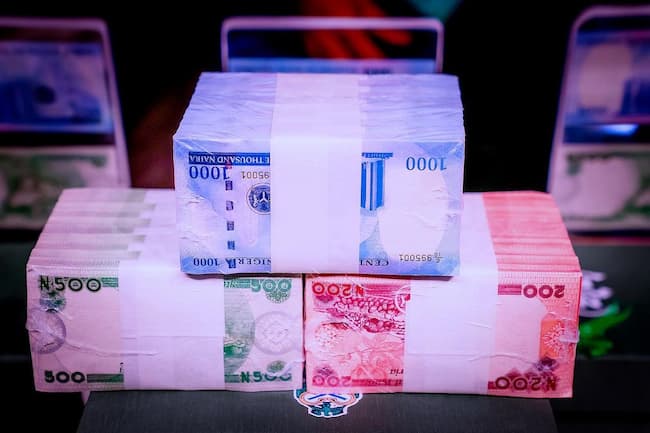With a roughly 23% increase in foreign payments commitments in the first quarter, the naira breached the old red line and is now among the worst performing currencies, trading at N1466.31 per US dollar.
The naira’s exchange rate situation was affected by difficulties with foreign exchange liquidity in the currency markets, following its first quick increase. The growing demand for US dollars, which continues to outpace supply on the market, has severely hurt the naira since it emerged as the global champion on the forex markets.
Strangely, after large foreign payments in the first quarter, Nigeria has begun to feel limited FX liquidity, which has led to a series of FX withdrawals from the country’s external reserves.
Analysts claim that ongoing tightening in FX liquidity, with limited inflows from both the CBN and offshore entities triggered negative performance of the Nigerian naira in the recent time. Investment firms reported that there were no inflows from the CBN recorded during the week, and foreign participation in the domestic capital market remained subdued.
“Looking ahead, we note that risks to Foreign Portfolio Investment (FPI) inflows remain elevated given the prolonged conflict in the Middle East amid CBN’s limited ability to adequately supply the market due to the weak net FX reserves.
“As a result, FX liquidity is expected to remain constricted, resulting in sustained pressure on the naira in the short term”, analysts at Cordros Capital stated in its macro update.
According to information obtained from the Central Bank of Nigeria (CBN), gross external reserves recorded further accretion, up by USD89.76 million to USD32.39 billion. Foreign reserves had climbed above $34 billion. The surge was attributed to FX inflows from investors that re-entered Nigeria’s financial markets due to attractive interest rates offering on OMO and Treasury bills.
The momentum has slowdown, forcing foreign investors to sell down their naira denominated financial assets as global central bankers’ keep rates higher in competition against emerging markets.
At the same time, international payments made by the CBN increased by 22.7% to USD1.61 billion in Q1-2024 from USD1.31 billion in the fourth quarter of 2023. In its market update, Cordros Capital Limited attributed the significant increase in foreign payment to higher foreign debt service and payments.
Analysts observed that payments for letters of credit declined by 15.6% in the first quarter to USD204.47 million as agaaints USD242.29 million in the fourth quarter of 2023. Notably, debt service payments accounted for 69.7% of total CBN international payments in Q1-24, explaining the large drawdowns on the FX reserves witnessed in the near-recent past, Cordros Capital stated in its update.
“We highlight that the higher debt service can be linked to interest payments on commercial (Eurobond), bilateral and multilateral loans”, the firm said.
According to data from FMDQ Securities Exchange, the naira depreciated by 4.5% to N1,466.31 per US dollar at the Nigerian Autonomous Foreign Exchange Market (NAFEM). Total turnover or volume of US dollar traded at the window decreased by 31% week on week to USD894.3 million with trades consummated within the N1,285 – N1,465/USD band.
Based on the data obtained from FMDQ, total FX inflows into the Nigerian Autonomous Foreign Exchange Market declined by 48.1% to USD1.95 billion in April from USD3.75 billion in March, 2024. The breakdown provided showed a broad-based decline across the local which accounted for 75.4% of total inflows and foreign sources which accounted for 24.6%.
Local inflows declined by 33.6% to USD1.47 billion from USD2.21 billion in March due to weaker inflows from non-bank corporates, CBN, and Exporters. This was supported by substantial increase of about 97% surge from individuals’ inflows in the month.
FX inflows from foreign sources came in lower, declining by 68.9% to USD478.10 million from USD1.54 billion as foreign investors began selling off risk assets to find safe havens amidst the lingering FX issues and weak macroeconomic environment.
In the parallel market, the naira weakened by more than 3% to close at N1425 due to elevated demand for foreign currency. Market anticipates US dollar sales to Bureaux de Change in May following obvious delay from previous trend.
In the forwards market, the naira rates depreciated across forward contracts. Details from analysts noted showed that 1-month forward contract depreciated by 4.6% to N1,477.91 per US dollar, 3-month contract tumbled by 5.4% to N1,530.14. Also, 6-month contract declined by 6.6% to N1,600.66 while 1-year contract deprciated by -6.1% to N1,733.33 per US dollar.














